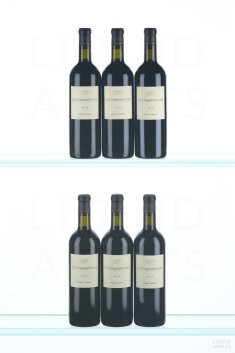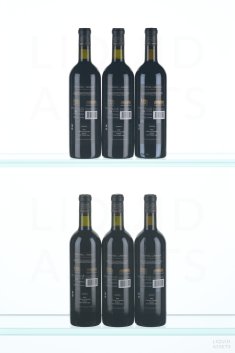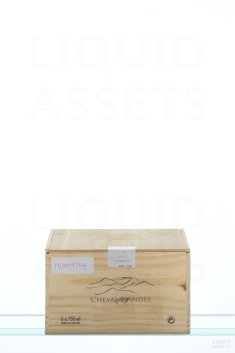2013 Terrazas de Los Andes Cheval des Andes Terrazas de los Andes, Vistalba, Mendoza, Argentina
| Country | Argentina |
|---|---|
| Region | Mendoza |
| Appellation | Vistalba |
| Producer | Terrazas de los Andes |
| Vintage | 2013 |
| Type | Red (Dry) |
| Grape Variety | Red Bordeaux Blend |
| ABV | 15.0% |
| Format | 6x75cl |
| Packaging | Original Wood Case |
| Duty Status | In Bond |
| Provenance | Purchased by Liquid Assets from a UK-based merchant; securely stored in a climate-controlled bonded facility |
| Stock | 2 cases (in stock and available immediately) |
96 Luis Gutiérrez, The Wine Advocate (December 2016)
At Cheval des Andes they consider 2013 as a warm vintage, because even if the winter saw average temperatures, the spring and summer were warmer than normal. The 2013 Cheval des Andes came up to 67% Malbec, 26% Cabernet Sauvignon and 7% Petit Verdot mostly from their vineyards at Las Compuertas at some 1,1000 meters altitude and some fruit from their 15 hectares at La Consulta in the Valle de Uco, that they use when they don't find it too ripe. Even if they tend to pick early, the bottled wine is a ripe and heady blend hitting the scale at 15% alcohol fermented relatively warm (28 degrees Celsius) for some 25 days. After malolactic in tank, all different lots go into barrel and they try to make the blend as soon as possible, usually during the first winter so the wine ages together for some 15 to 18 months in French oak barriques. They have reduced the amount of new wood used (only 30%) to avoid overwhelming the fruit with aromas but providing complexity and clarifying the wine naturally. From this vintage onward they have been able to not acidify the wine, as they changed their approach to viticulture, and they are now able to burn the green notes and harvest early, with natural acidity and lower alcohol. The key to this is to get something like 30-35 hectoliters per hectare. I think this is absolutely the right approach, and this change started in 2010--with 100% estate fruit, no oenological products used, fresh maturity without greenness through lower yields. In 2013, they consider they have achieved what they want, but kept improving in 2014, 2015 and 2016. The 2014 had just been bottled and I didn't have the chance to taste it, but they told me they prefer 2014 to 2013. If that is the case, 2014 should be mind-blowing, because 2013 is simply superb. To Pierre Olivier Clouet, another key point is how to manage irrigation. The result of all this is more and more precise wines, with greater definition, purity and freshness. They are also avoiding residual sugar, so the wines are completely dry. They also started to work with 500-liter oak barrels, trying to find the integration of the oak keeping the percentage of new barrels but using larger ones. Malbec is quite sensitive to oak, and again, this approach has worked perfectly here. Finally, they are also moderating extraction, with a longer maceration but less pumping over, because with too much pumping over you have the risk of extracting too much dry tannin. It has great balance and freshness, with great elegance, and super-refined tannins. I've never tasted such an elegant Cheval des Andes, all about finesse and balance. Bravo to the new team! I'm really looking for ward to tasting the following vintages. 70,000 bottles produced. It was bottled in March 2015.
94 Stephen Tanzer, Vinous (June 2017)
Bright, dark ruby. Sexy oaky high tones to the classy scents of blackberry, cassis, licorice pastille, tobacco leaf and violet. Wonderfully fine-grained wine with a seamless, velvety texture and terrific restrained sweetness to its blackberry, licorice and mineral flavors. Very penetrating, savory, rather powerful wine with terrific ripe tannins, a repeating licorice pastille quality and outstanding rising length. Really terrific subtle sweetness of fruit here. Has the density of texture and energy for a slow and eventful evolution in bottle.
| Vintage | Format | Packaging | Stock | Price | Status | |
|---|---|---|---|---|---|---|
| 2015 | 6x75cl | 2 cases | £425.00 | In Bond | View |



